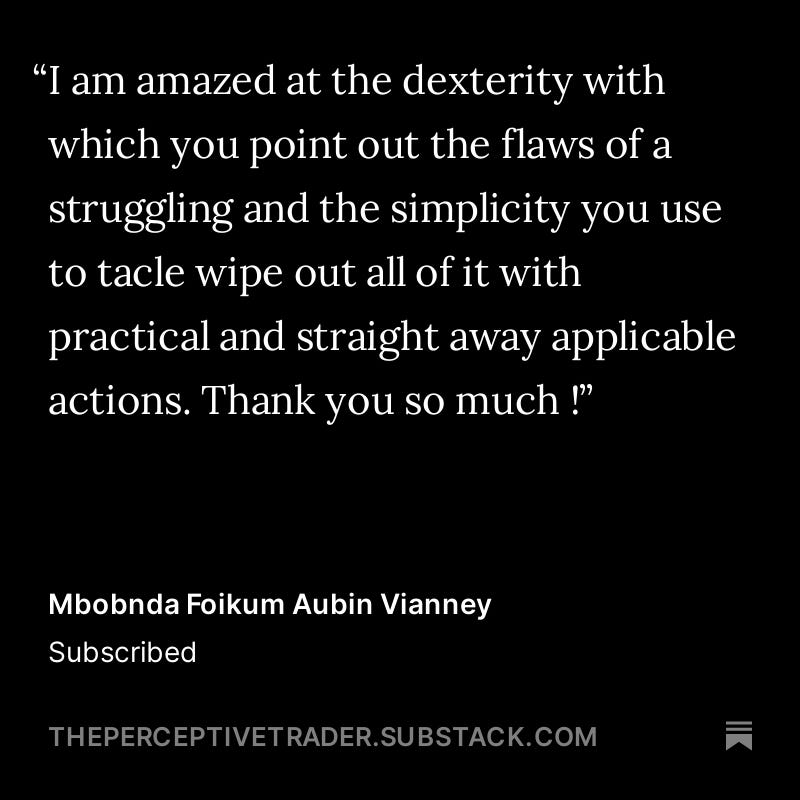Why Your Entry Checklist Isn’t Enough
The Thursday Trader's Tip edition offers to-the-point trading performance advice that can be read under 5 minutes.
Level up your mindset. Grow your PnL.
On Saturday, April 26, I’m hosting a live session on a topic many traders don’t get support with:
Unlearning the mind programs holding back your trading success.
If you’ve ever felt stuck—repeating mistakes you know how to avoid—this is for you.
It’s a paid-subscriber-only webinar. I’d love to see you there. Click here to save your spot.
In the early stages of trading, most traders obsess over their entry checklist.
Is the setup valid?
Do all the technical confluences line up?
Is this trade “allowed” by the strategy?
That’s the focus—and it makes sense. You’re learning the system. You’re building discipline. You want to make sure you’re doing it right.
But at some point, that checklist stops being enough.
Here’s a common reality I observe:
You have your system that works. You’ve tested it, you have the data, and maybe you had profitable periods trading it. But there’s a moment when your results start to get inconsistent. You’re sticking to the system, yet the outcome doesn’t match your effort as it used to. So, you begin to doubt your strategy and yourself.
Now, some traders respond by adding more technical layers—tweaking the entry model, over-optimizing the system... resulting in deviating from their circle of expertise.
But the problem isn’t their edge. It’s their capacity to use it.
Think about this: It doesn’t matter how well you’ve trained, if you try to run a marathon on 3 hours of sleep, you won’t have the energy to perform. Many of the traders out there are running marathons every day at low capacity.
They take into account the technical factors but neglect the human side.
Average traders use entry checklists to make sure the setup is valid. For experienced traders, that’s not enough…
Entry Checklist Vs. Trade Checklist
A client told me he had moved from entry checklist to a trade checklist.
Not just: Is the setup valid?
But also:
— Is the risk-to-reward worth it right now?
— Is my energy, focus, and mental clarity high enough to trade this well?
— Is this the right time of day for me?
With more experience comes a higher level of detail.
You move from purely validating strategy rules to checking in with the human who has to execute them.
One Action Step For You
Next time you find a valid setup, pause before you move to the execution timeframe to pull the trigger. Ask yourself 3 simple questions:
Where’s the level I’ll take profits/my first partial? Is the RR worth the trade?
Am I trading to grow or to compensate for something?
Am I in a state where I can execute this trade at my best?
If the answer is no, step back. You’re wise enough to preserve your capital and your confidence. This type of selection is what elite performance looks like.
If you’re ready to elevate how you think about performance, the paid version of The High-Performing Trader offers tools and mental models to help you stay on top of your game.
We’ll go deeper into this in the April 26 webinar. Save your seat here: Reserve your spot.
Peaceful trading,
Sara
P.S. If you take value from this read, please leave a ❤️.
Paid Subscriber Notes
Related Reads:









